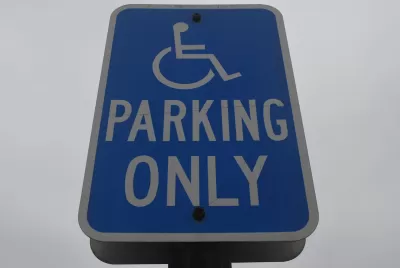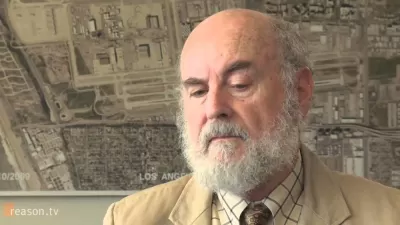The fine for misuse of a placard will increase considerably, but not everyone agrees this is the right way to address a growing problem.

The Los Angeles City Council recently voted to raise the fine for misuse of disabled placards from $250 to $1,100. The placards allow users to park free and for an unlimited amount of time in metered spaces, and abuse is rampant. The practice means that people who need access to disabled parking spaces often cannot find available spots.
But the focus on enforcement and fines is not a universally accepted strategy. Fernando Torres-Gil and Donald Shoup at UCLA say limiting the number of placards handed out would be a more effective tactic, reports Sonja Sharp:
The so-called two-tier system would divide California’s current placard holders — roughly 2.5 million people, or about 6% of the population — into those with severe mobility impairments and those whose disabilities are less physically limiting, shearing the latter class of many of their existing protections.
But many disability rights advocates do not support this approach, arguing that it stems from the perception that disabilities are always obvious and that many people who have placards do not deserve them. "The obsession with fraud creates a 'culture of harassment' for people who may not fit the public image of disability — wheelchair users who also walk, gym-rat amputees and young mothers with multiple sclerosis and infant seats in their cars," notes Sharp.
Supporters of the tiered system say that the majority of individuals considered disabled under the Americans with Disabilities Act do not have severe mobility impairments. As a result, the status of those who do receive placards would be legitimized under the more stringent standards.
FULL STORY: L.A. quadruples the fine for disabled-placard fraud, but will it help?

Study: Maui’s Plan to Convert Vacation Rentals to Long-Term Housing Could Cause Nearly $1 Billion Economic Loss
The plan would reduce visitor accommodation by 25,% resulting in 1,900 jobs lost.

North Texas Transit Leaders Tout Benefits of TOD for Growing Region
At a summit focused on transit-oriented development, policymakers discussed how North Texas’ expanded light rail system can serve as a tool for economic growth.

Why Should We Subsidize Public Transportation?
Many public transit agencies face financial stress due to rising costs, declining fare revenue, and declining subsidies. Transit advocates must provide a strong business case for increasing public transit funding.

How to Make US Trains Faster
Changes to boarding platforms and a switch to electric trains could improve U.S. passenger rail service without the added cost of high-speed rail.

Columbia’s Revitalized ‘Loop’ Is a Hub for Local Entrepreneurs
A focus on small businesses is helping a commercial corridor in Columbia, Missouri thrive.

Invasive Insect Threatens Minnesota’s Ash Forests
The Emerald Ash Borer is a rapidly spreading invasive pest threatening Minnesota’s ash trees, and homeowners are encouraged to plant diverse replacement species, avoid moving ash firewood, and monitor for signs of infestation.
Urban Design for Planners 1: Software Tools
This six-course series explores essential urban design concepts using open source software and equips planners with the tools they need to participate fully in the urban design process.
Planning for Universal Design
Learn the tools for implementing Universal Design in planning regulations.
City of Santa Clarita
Ascent Environmental
Institute for Housing and Urban Development Studies (IHS)
City of Grandview
Harvard GSD Executive Education
Toledo-Lucas County Plan Commissions
Salt Lake City
NYU Wagner Graduate School of Public Service





























